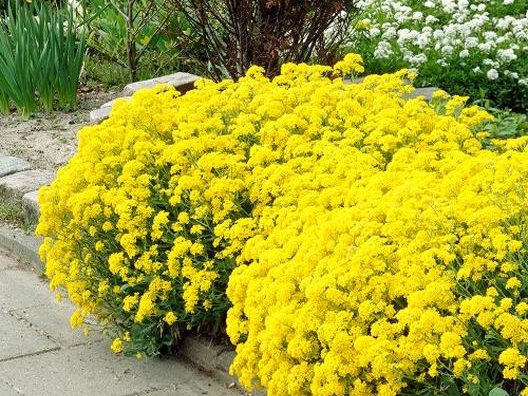About Alyssum
Lobularia maritima, a resilient annual, actually belongs to the cabbage family! Once alyssum matures, it showcases an abundance of delicate blooms that can gracefully spill over the pot’s edge, serve as an edging plant in the garden, or as a blanketing groundcover. Its dense growth is effective in suppressing weeds.
Alyssum plants serve as a natural pest control solution in the vegetable garden, effectively managing aphid infestations. Alyssum’s pollen and nectar are attractive to parasitic wasps and syrphid flies, enjoying the nectar as a food source while feeding on aphids.
When to Plant Alyssum Seeds
Plant outdoors once all risk of frost has passed, or start indoors five to six weeks before last frost.
Where to Plant Alyssum Seeds
Plant alyssum seeds in full sun where available (six to eight hours of sun per day), although it will tolerate partial shade (four to six hours of sun per day). Plant in well-draining, acidic soils, as alyssum is tolerant of rocky and sandy soils. Alyssum grows well on slopes and in rocky garden environments that may not be suitable for other landscape plants.
How to Plant Alyssum Seeds
Alyssum seeds are so small that they are difficult to count, so scatter about four to eight seeds onto the surface of a general seed starting mix and gently press them no deeper than a 1/8th of an inch. Seeds should not be buried, as exposing seeds to sunlight is needed for germination. Use a plant mister to water them so as not to displace them too much, or wash them away. Learn more about germination light requirements here.
If starting indoors, plant your alyssum seeds in a tray with a humidity dome cover and place your tray in a bright and warm south-facing window. Of course, you can always use grow lights or a seedling heat mat if it is particularly cold or cloudy. Try to keep the area between 55°F and 70°F. Once seedlings begin to appear, you can remove the cover and gently thin out the seedlings to one every six inches. Harden off the seedlings and transplant out into the garden once the danger of frost has passed. Read more about how to harden off seedlings here.
When transplanting young seedlings, or even starting your seeds outdoors, do so after all danger of frost has passed. Alyssum is a spreading plant, kept six to eight inches apart for best results. It is also a wonderfully adaptable plant and will tolerate most soils, as long as they are well draining.
How to Care for Alyssum
Alyssum is a low-maintenance plant. Water sparingly but deeply as this plant can be used for xeriscaping. Alyssum roots do best when allowed to dry out a bit between waterings, particularly in a partial shade environment. Consistently damp or soggy soil will make the plant prone to root rot. Particularly hot summers may require more frequent watering as needed, but alyssum does not need to be pampered. Light pruning and deadheading of the plant can allow for an additional flush of bloom throughout the season. Despite being annuals, alyssum is a heavy reseeder and will return each year.



